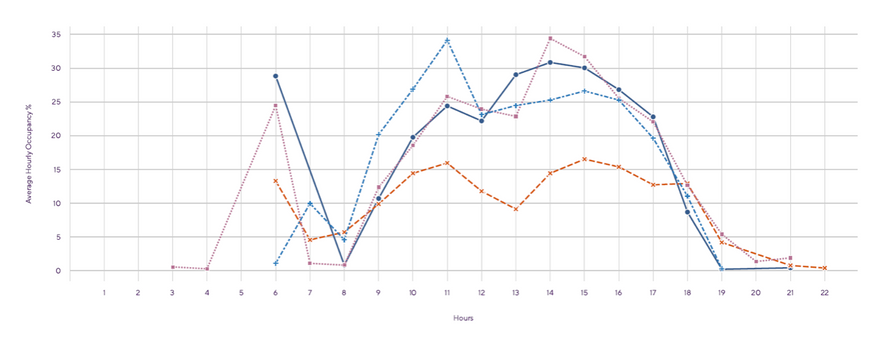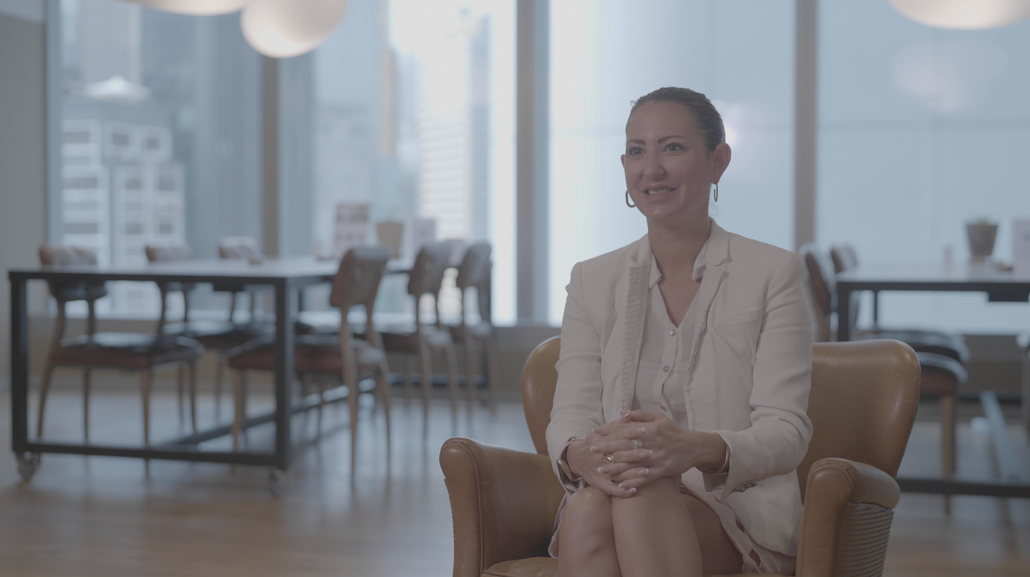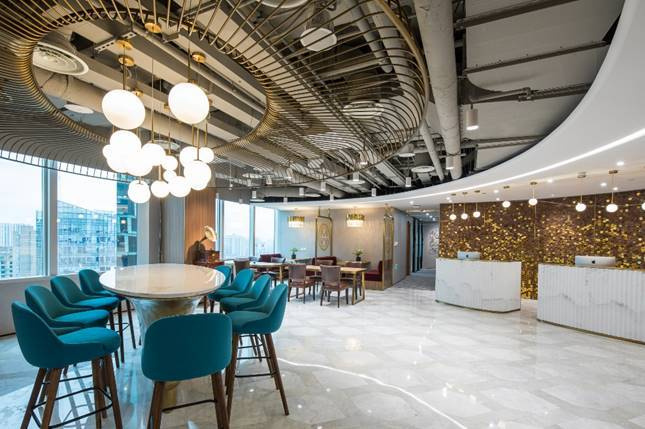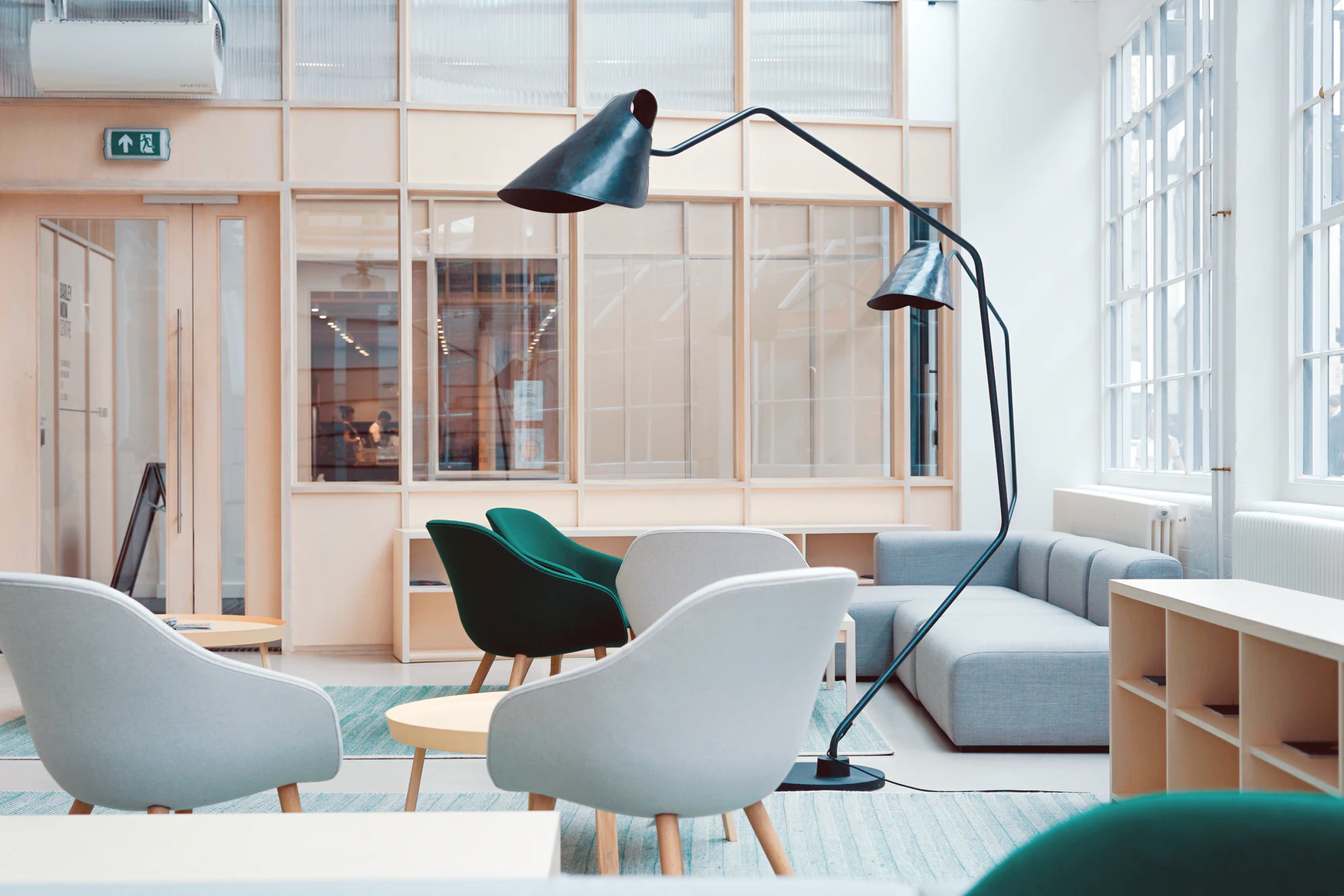Case Study
Unlocking the Value of Occupancy Data for The Executive Centre
The Challenge
How can coworking spaces better utilise occupancy data to create frictionless experiences: from personalised service to exceptional staff and amenities, encouraging wellbeing for every member?
Industry: Coworking space
Measurable Results
18
Floors, across 3 coworking offices
80+
Office spaces, 9 meeting rooms, 50+ hot desks
550
Daily visitors and members
18
Floors, across 3 coworking offices
80+
Office spaces, 9 meeting rooms, 50+ hot desks
550
Daily visitors and members
The Project
This cutting-edge coworking space in the heart of the city’s financial district delivers hospitality-driven guest experiences in a sophisticated setting. With 80+ dedicated office spaces, 9 meeting rooms, 50+ hot desks, 3 lounges and breakout areas, they were looking to answer questions most coworking operators grapple with: Which desks are the most popular? Do people prefer to sit at the lounge, bar, or bay window? How are meeting rooms used? Can we allocate staff based on traffic? The challenge was to uncover actual occupancy and behavioural patterns to optimise space use, improve service and return on investment.
Hot desks, private offices or meeting rooms? How do you engineer the perfect balance of amenities and spaces to match daily and seasonal trends? For coworking spaces, occupancy insights create an environment for unparalleled service.
Interview
Space Analytics and The Future of the Workplace
Global Marketing & Communications, The Executive Centre
Tell us about The Executive Centre, what were your objectives for the space optimisation project?
At the Executive Centre we have over 180 offices, serving over 45,000 members across our global network, and within these offices we have a variety of spatial design configurations — for instance, we have lounge areas, but we also have barista bars, we have huddle rooms, call rooms, meeting rooms of various sizes, in addition to private offices where organisations have their own space.
“We didn’t have a clear understanding of the occupancies of our office spaces at different times through the day and the year. With the future of work and the changing ways people are thinking about where they work, and how they work, we really wanted to get a better understanding of the kinds of spaces that people were using, how they were using it and at what frequency, to inform our designs both for the present, and to provide insights as we design new centres in the future.”

Why is data-driven technology a priority for TEC?
A lot of the information we have is anecdotal, from teams that spend their time in the Centre or from our engagement teams that sit in the reception area, but it was happenstance or through observation, and not highly accurate. We wanted data that was more accurate, so we could look at the numbers and compare trends. We are really interested in workplace trends at The Executive Centre, but in order to be accurate about your trends you need actual data.
“Neoma’s solution really helped us look at the real numbers and compare them to the anecdotal stories that we hear from our teams. It’s this combination of qualitative information from our people on the ground, combined with actual tangible data, that creates a much more holistic picture to help us make better and more informed decisions.”

How did Neoma help you apply space management technology for the office and what were your objectives to deploy sensors?
Now we know when we need more huddle rooms or more call rooms because we can see from the numbers that those are the spaces that people are using, instead of just guessing. It also helps us inform our clients when they say, we really want to use a flexible workspace but we don't understand how it works. We can say, here’s some real information about the way that people are using our centres and it's also something that we can help our clients input into their own workspace planning as well, which is a request we're seeing more frequently right now.
“Neoma’s technology helped add a layer of accuracy on top of all the qualitative information that we have from our teams. For us that was really important because we are continually designing new centres, and we want to make sure that they're optimised.”

How do you use data insights in your daily operations member experience and analytics-based planning?
We had an idea about the spaces that people used the most but when we looked at the actual data in terms of where people were sitting the trends were even more easy to see. Some spaces were used a great deal more than what we had anticipated based off our observations.
Our clients often ask us for advice about how they should build their future workplace strategy and having this kind of tangible data, helps us say, these are the trends we're seeing, this is how many people use the space, how frequently they were here, and maybe it means that you could reduce your workspace if you wanted. Or if it's 100% occupied all the time, maybe it means that you need to add some space.
"We’re always trying to provide the best solution for our clients and sometimes the best solution is actually to tell our clients you need a little bit less space and data helps us make those recommendations more accurately."

What are the applications of occupancy utilisation data for the co-working industry?
There are two different areas where I think data can really help the flexible workspace industry in general. The first we touched on already: about informing the spatial design particularly of common areas. So do we want more meeting rooms? Do we want more call booths? Do we want more lounge areas? More co-working tables?
The more we can provide spaces that people actually want to use the better the experience. The second is the opportunity to almost proactively anticipate what people are going to do and what they're going to want and use technology to be able to deliver that experience.
"If we know that one particular client uses a meeting room every Tuesday at noon, we can reach out and say, would you like us to cater lunch for you this time or would you like to have water bottles when you arrive? It's a better experience for our clients and an upselling opportunity for us — so that's a great outcome for both."
How has Neoma’s workplace solution helped you so far?
At the Executive Centre we have a ton of data because we have 45,000 plus people using our spaces, even more, if you count external members that come in. Within these common areas, the challenge for us is that the data is in a lot of different places and there wasn't an area or a specific place where we could go and look at all of it together and have it synthesised in a way where the different data points are collated, digested and analysed together for insights.
Neoma team also helps us with their wealth of experience on projects like ours to distil actionable insights from the data. Ultimately, data is useful only if you actually put it to work and act on it.
“Neoma’s platform really helps us look at all of our data in a very digestible, understandable way and builds efficiencies because it's all in one place instead of us having to aggregate that data from multiple sources. It’s been incredibly useful tool for us.”
To learn more about Neoma's workplace solutions,
reach our customer success team.
More Stories
See how businesses like yours deliver results with Gaia



